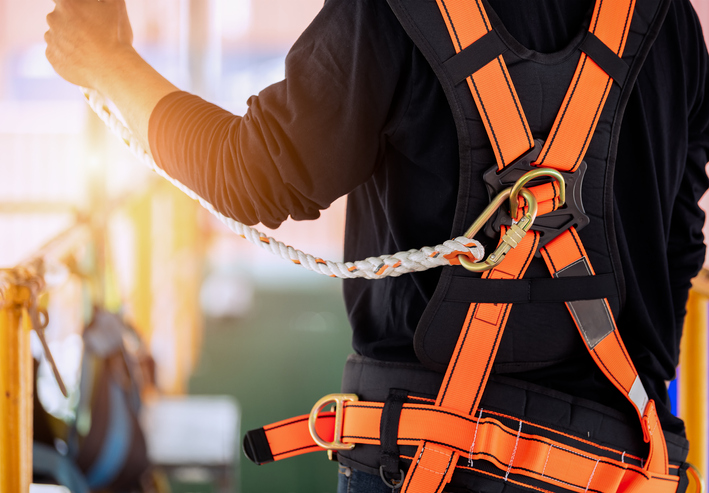Annually, around 5,000 workers die and millions are injured on the job. Many of these deaths and injuries are preventable, caused by Occupational Safety and Health Agency (OSHA) violations.
In September, OSHA revealed preliminary data about the top ten violations they’ve cited in 2019. The list is largely unchanged from 2018, with two violations trading ranks in the list (respiratory protection took the place of control of hazardous energy-lockout/tagout).
The data reveal the largest areas of concern for worker safety and opportunities for employers to improve.
Top Ten Violations
| Rank | Standard | Number of Citations |
|---|---|---|
| 1 | Fall Protection - General Requirements (1926.501) | 6,010 |
| 2 | Hazard Communication (1910.1200) | 3,671 |
| 3 | Scaffolding (1926.451) | 2,813 |
| 4 | Control of Hazardous Energy - Lockout/Tagout (1910.147) | 2,606 |
| 5 | Respiratory Protection (1910.134) | 2,450 |
| 6 | Ladders (1926.1053) | 2,345 |
| 7 | Powered Industrial Trucks (1910.178) | 2,093 |
| 8 | Fall Protection - Training Requirements (1926.503) | 1,773 |
| 9 | Machine Guarding (1910.212) | 1,743 |
| 10 | Personal Protective Equipment - Lifesaving Equipment and Eye and Face Protection (1926.102) | 1,411 |
Once again, fall protection regulations represent both the top most frequently cited violation, and the 8th most frequent. Falls are also the most common cause of workplace deaths and injuries, making this the largest opportunity for safety improvements.
Fall protection includes providing railings and toe-boards for any potential fall hazard, such as holes, platforms, or access to large machines and vats. It also includes the use of safety harnesses and lines, safety nets, stair railings, and handrails where appropriate. It can also include ensuring floors and work areas are dry and free of slipping and tripping hazards.
Violations include failure to provide and enforce the use of adequate protections, failure to remediate fall hazards where possible, as well as failure to train employees in the correct use of safety equipment and safety procedures.
Violations regarding scaffolding and ladders, in the 3rd and 6th positions, contribute to fall hazards as well as providing additional risks, such as falling objects.
Hazard communication is another substantial area for improvement, and includes creating, maintaining, and communicating an effective hazard communication plan that ensures all employees are aware of the major hazards present in the workplace, and the correct safety procedures for managing them.
Violations of lockout/tagout procedures, industrial trucks, and machine guarding hold the 4th, 7th and 9th positions, representing substantial risks of injuries due to crushing and/or exposure to hazardous energy.
Personal protective equipment makes the list again, twice, as a problem area. Lungs, eyes, and hands are among the most commonly injured body parts on the job site, and represent areas for improvement. Respiratory protection requires that employees be provided with the right kind of respiratory protection for each specific potential exposure, and be trained in its proper use. Likewise, every employee should be provided with correct and well-fitted eye and hand protection and training in which PPE to use under what circumstances.
Our industrial hygiene teams have been helping clients ensure their workplace is a safe and violation-free environment for over 30 years. We’d love to be a part of your health and safety team. Contact us today.



